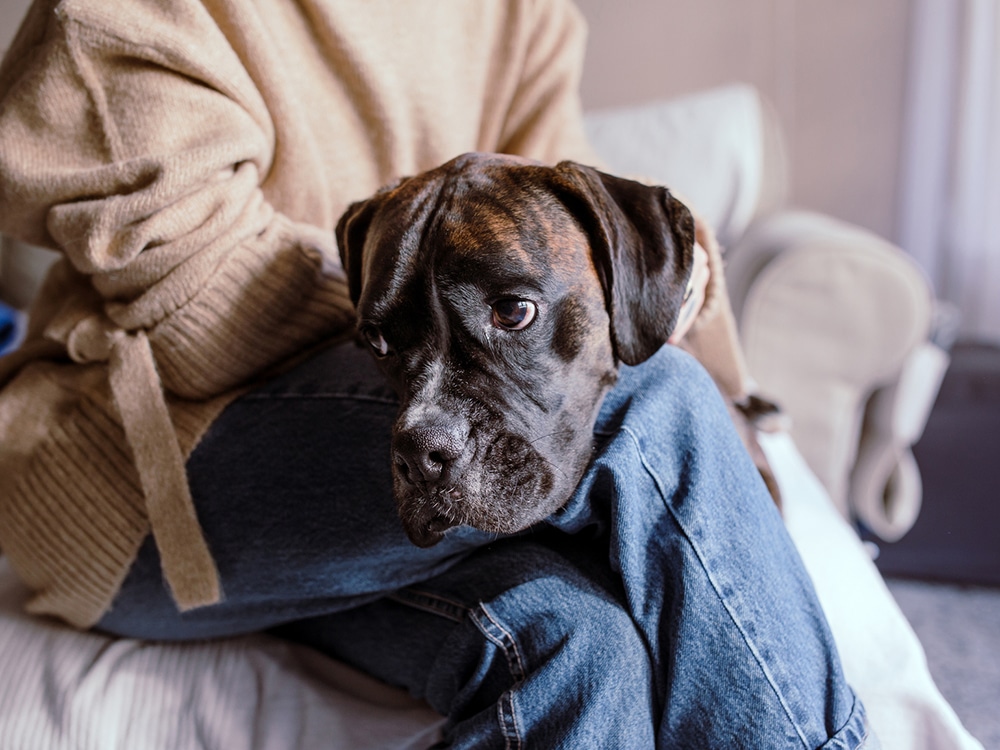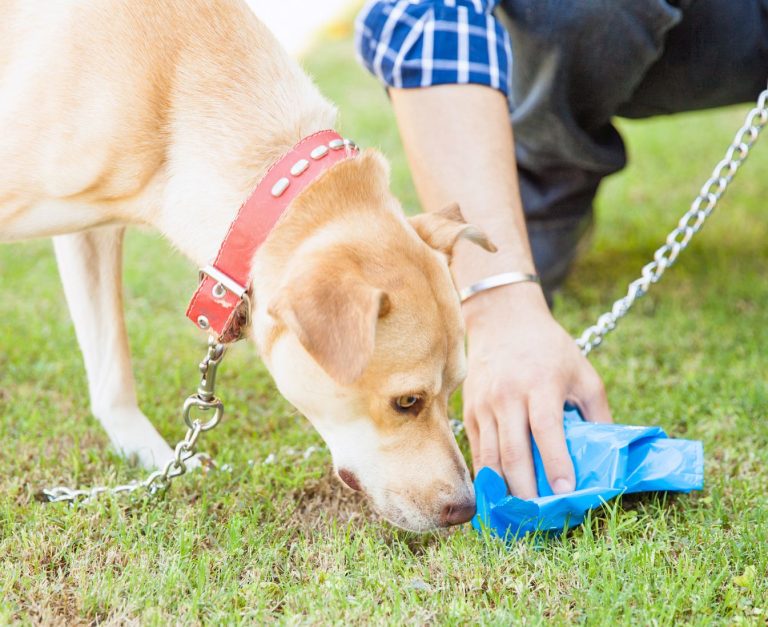9 Reasons Behind Why is Your Dog Crying for No Reason
Dogs are wonderful companion, known for their loyalty and affection. However, if your furry friend is suddenly crying or whining for no apparent reason, it can be distressing for you and your pet. It is their way of communicating discomfort, anxiety, or other needs.
As a responsible pet parent, it is important to understand that there is usually a cause behind your dog’s cries. If your dog is whimpering for no reason, you must check out any health issues or other concerns or consult a vet. By identifying the underlying causes, you can help your pup feel more comfortable and secure and ensure a good night’s sleep for you and your four-legged companion.
This blog will explore nine common reasons your dog may cry seemingly without a reason.
Reasons Why Is Your Dog Crying for No Reason
Dogs like to talk to us in their way, and they have various ways of doing it, such as barking, licking their paws, and whining. Sometimes, you might wonder why your dog is crying for no reason. However, these whines have many reasons, and most aren’t a big deal. But it is essential to understand why they are whining. But there are some situations where their whining could signal something.
Understanding these signs can help you take better care of your beloved pet.
Reason 1: Medical Reasons
Dogs don’t talk like humans, so they have to use their bodies and sounds to tell us when something’s wrong. If your dog is crying or winning a lot, then one reason can be they are not feeling well. They could be in pain for some reason. This can be because of an injury, an illness, stomach pain, problems with their teeth, and many more.
Since your dog can’t pinpoint where it hurts, it is important to visit the vet. A veterinarian can determine what is wrong and make your dog feel better. To keep your dog healthy, remember to take them for regular check-ups and vaccinations. This way, you can ensure your furry friend stays happy and healthy.
Reason 2: Anxiety and Fear
Dogs can get scared and worried, just like people do. If your dog is crying for no reason, they might feel anxious or frightened. Things like thunderstorms, fireworks, and being alone can make them anxious.
To help your dog feel better, you can create a safe and comfy spot for them. It is a special place where they can relax. Also, you can consult a dog expert to teach your pup how to be less anxious.
Reason 3: Loneliness
Dogs really love being around others, and they feel sad and lonely when they are all by themselves for a long time. When your dog is alone a lot, they can get lonely and upset, which might make them cry.
To make them feel better, you can try to have someone be with your dog when you are not around. Another idea is to get another dog to keep your pup company. Interactive toys and puzzle feeders can also help.
Reason 4: Hunger or Thirst
Just like any human being, dogs also get hungry and thirsty. When your dog cries, it could be because they are thirsty or need something to eat. You should make sure their food and water bowls are always full. It is a good idea to set up a routine for their meals.
This means feeding them at the same time every day helps to stop them from crying because they will know when to expect their food.
Reason 5: Environmental Discomfort
Dogs notice everything carefully in their environment. If things change, they might feel uneasy. This can make them cry. To help your dog feel better, ensure they are comfortable at home. Adjust the temperature so it is just right for them.
If there is a loud noise, like construction work, you can try to find ways to make it quieter for your furry friend. Dogs like calm and cozy places, so make their environment as comfortable as possible to keep them happy.
Reason 6: Boredom
Some dogs are very active and need lots of things to do. When they get bored, they might start crying because they feel frustrated and restless. To keep your dog from getting bored, give them plenty of exercise and playtime. You can play games like fetch. Interactive toys, which are like puzzles for dogs, can be a lot of fun for them.
By keeping your dog active and mentally busy, you can help prevent them from getting bored and crying for no reason. It is a great way to make sure they are happy.
Reason 7: Attention-Seeking Behavior
Dogs are clever, and they can figure out that crying or whining gets them what they want. If they see that when they make noise, you will pat them, give them treats, or play with them. They might use this trick to get your focus.
It is important to learn the difference between when your dog genuinely wants something and when they are just trying to get your attention. You should reward them for good behavior and not encourage them to cry for attention.
Reason 8: Aging and Cognitive Decline
As dogs get older, they might change their thinking and behavior. This is sometimes called canine Cognitive Dysfunction or CCD. Your older dog could become confused, disoriented, and even cry more than before.
If your older dog is going through this, it is a good idea to consult a veterinarian. They can give you advice on how to take care of your aging pet and make sure they have a good life.
Reason 9: Past Trauma
Dogs can remember things that scared them or hurt them in the past. Those memories can come back, making them cry. If your dog had a rough time before, like if they were mistreated or neglected, these old memories can cause distress. The best way to help them is to be patient and gentle. Use positive methods to train and care for them. This can help your dog learn to trust again and feel safe and happy.
So, these are some of the reasons for your dog crying for no reason. Make sure to give your furry companion a supportive and friendly environment and strengthen the bond you share.
What to Do When Dogs Cry for No Reason Excessively

Having a dog excessively crying for no reason can be quite a challenge. Now that you know why your dog might be whining so much, let us talk about how to make it stop. It mostly involves giving your dog enough fun things to do, exercising them, and teaching them how to control their impulses.
Here are some things you can try to help ease your dog’s anxiety and get their whining under control.
- Impulse Control Training: Whining is often an emotional impulse, so teaching your dog to control their impulses can help them stop whining. You can use many games to teach your dog to stay calm and focused. Playing games and activities can help them remain calm and focused and build self-control.
- Training For Being Alone: You can train your dog to be happy when they are alone at home. This can help with separation anxiety. This training involves a gradual and patient approach. You can also slowly teach your dog how to behave when they are on their own. It is a gradual process that can help your dog learn to adapt to being alone and reduce separation anxiety over time, ensuring a happier and more relaxed pet when they are away.
- Use Engaging Toys: Keeping your dog busy and happy with toys that make them think can help reduce whining. It is important for solving various behavior issues, including excessive whining. Two toys that work well are snuffle mats and lick mats. Snuffle mats encourage dogs to use their noses to hunt for hidden treats, providing them both mental and distraction from whining. Lick mats can be spread with delicious, long-lasting treats, keeping your dog occupied while they work to enjoy every bit. These toys provide both fun and mental exercise for your dog.
- Sometimes, Ignore It: If your dog whines for attention or out of boredom, ignoring it can help make it stop. But you have to be consistent. If you decide to ignore attention-seeking whining, you must ignore it every single time.
These effective strategies help you tackle your excessive crying, ensuring you and your pet enjoy a more peaceful and harmonious life together.
How to Stop Dogs from Whining

Stopping a dog from whining is an important aspect of training and ensuring a peaceful environment.
Here are some steps to stop dogs from whining:
- First, try to understand why your dog is whining. Dogs may whine because they are hungry, in pain, anxious, or need to go outside or seek attention. Identifying the cause will help you address the specific issue.
- Ensuring that your dog’s basic needs are met. Ensure they can access food, water, and a comfortable resting place. Take them for regular walks and provide mental stimulation through toys and playtime.
- If your dog’s whining seems unusual or is accompanied by signs of pain or discomfort, consult a veterinarian to rule out any underlying health issues.
- Use positive reinforcement training methods to teach your dog appropriate behavior. Reward them when they are quiet and calm, and ignore them when they whine. This teaches them that whining does not get them what they want.
- Train your dog to obey basic commands like “sit,” “stay,” and “quiet.” Use these commands to redirect their attention and behavior when they start to whine.
- Sometimes, dogs whine due to anxiety or fear. Provide a safe and comfortable environment for your dog. A cozy place or a designated quiet space can help them feel secure.
- Ensure your dog gets good and enough physical and mental exercise. A tired dog is less likely to whine out of boredom or excess energy.
- Socialize your dog with other dogs and people to build their confidence and reduce anxiety-related whining.
- If your dog whines in response to specific triggers (like the doorbell), work on desensitizing them to these triggers through gradual exposure and positive reinforcement.
- When addressing whining, remain calm and patient. Yelling or scolding your dog may increase their anxiety and worsen their whining.
- If your dog is still crying for no reason despite your efforts, consider consulting a professional dog trainer for special guidance.
Remember that positive reinforcement is the key when training your dog to stop whining. Be patient; you can help your dog develop better communication and behavior with time and effort.
Should One Be Concerned If The Dog Is Whining in Her Sleep?

Dogs can do several things, and one of those things is whining during sleep. If your dog does this, it is not much concerning. Dogs, like humans, can sometimes make noises or movements while they are dreaming. It is a natural part of their sleep cycle.
Sometimes, dogs can have nightmares, too. If your dog is whining while giving out signs of distress, such as restless movement, shaking, or even crying, it indicates that they are experiencing an upsetting dream. In this case, your dog needs some comfort. Also, sometimes, underlying health problems can be a reason for them to whine during sleep. It is essential to monitor your dog for any other concerning reasons during their awake hours.
Also, as the dogs age, they may experience changes in sleeping patterns and behavior. Elderly dogs become more restless during sleep and may whine or vocalize more frequently.
Tips to Deal with Whining in Your Sleeping Dog
If your dog occasionally whines in her sleep and there are no other concerning signs, you usually don’t need to do much. But if her night-time whining is bothering you, then you can check out the following tricks.
- At first, observe the dog without waking her up. Sometimes, the whining might stop on its own. By giving her a chance to settle down on her own, you might avoid unnecessary disruptions. The patient observation allows you to check whether your dog is crying for no reason or if it is temporary. If it is a recurring issue, it needs further attention.
- Make sure your dog has a cozy place to sleep. Also, keep the room at a comfortable temperature. Dogs are happy when they have these things.
- Use soothing background sounds and create a relaxing temperature. It is important to listen to your pet’s needs and adjust the sleeping conditions accordingly. This might stop her from getting disturbed during sleep. And ensuring their well-being and happiness.
- If your dog’s nigh-time whining happens a lot, consult a veterinarian. This persistent behavior could indicate underlying health problems or discomfort that require professional evaluation. They can check for health issues and give you advice on how to deal with the problem. Early intervention can prevent your pet from suffering unnecessary health issues.
Remember, dogs have their unique sleep habits and may vary from one dog to another. The key is to create a soothing and comfy atmosphere for your furry friend so she can enjoy her dreams and wake up feeling refreshed and happy.
Should One Ignore a Whining Dog?

Ignoring a whining dog can be a tricky decision. Dogs whine for different reasons, and it is important to know why they are doing it. Sometimes, dogs whine when they are hungry, thirsty, or need to go outside as they become bored and want to play. In these cases, it is not a good idea to ignore them because they are telling you to have a basic need that must be met. But if your dog is whining only for attention, it can be okay to ignore them sometimes. If you pay attention to them every time they are whining, they might learn that whining is a way to get what they want.
On the other hand, if your dog whines due to discomfort, pain, anxiety, fear, or boredom, ignoring them can be harmful. They need comfort and reassurance. If your dog is bored and whining for some fun, ignoring them can lead them to destructive behavior because they are frustrated.
So when deciding whether to ignore a whining dor or not, consider if your dog whimpering for no reason and what is the actual reason and act accordingly to ensure their well-being and happiness.
Conclusion
All in all, it can be frustrating when your dog is crying for no apparent reason, but it is crucial to investigate the underlying causes and address them with care and understanding. If your dog is crying for no reason, it is important to observe their behavior closely.
Your dog’s cries are a form of communication, and by paying attention to their needs and emotions, you can ensure that your furry friend lives a happy and content life. Remember that a trip to the veterinarian should be your first step to rule out any medical issues.
Beyond that, creating a loving and supportive environment, providing mental and physical stimulation, and being patient with your dog can go a long way in addressing their cries and strengthening the bond you share.







